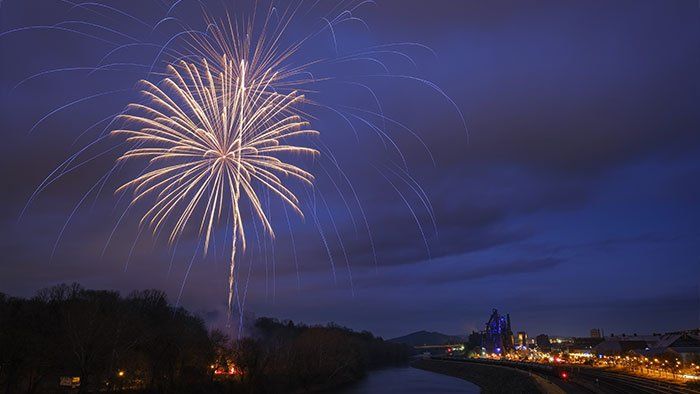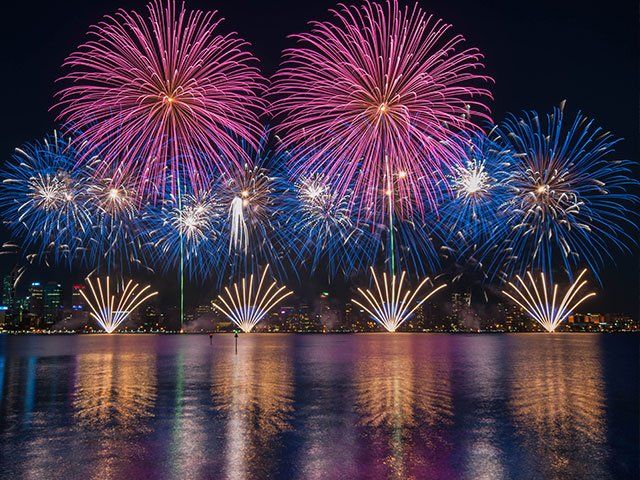Photographing Fireworks
Getting great pictures of fireworks is easier than you might think. Let's take a look at how get some spectacular snapshots.
What you'll need
- Your camera
- A tripod or monopod to hold the camera for long exposures
- Plenty of memory cards (or film, if you're going retro! ISO 200 or 400)
Other things you might want to bring
- Cable release or remote control
- A small flashlight so you can adjust your camera in the dark
Need some gear? Don't forget about our rental department for sturdy tripods, sharp wide-angle lenses, and cameras that are amazing in low light.
Location, location, location!
Arrive early so you can find the best location to shoot from. You'll also be able to make sure you have enough room to set up your tripod. Choose a dark area, away from streetlights or other lights that may affect your photos. Try to pick a spot where you can include some of the ground (trees, people, etc.) in the lower part of the frame. They'll add realism & perspective to the photographs.
Setting your camera
Set the camera to landscape or fireworks mode, or manual focus. Autofocus may get confused by the dark sky and not work properly. Use a tripod to steady your camera and avoid blurry images. Turn your flash off.
Set the camera to its lowest ISO setting. It may be dark out, but fireworks are bright. You don't need the extra sensitivity of high ISO settings. If your camera has a noise reduction setting, use it to reduce any "grainy" appearance in the dark areas of your image. Shoot at the highest image quality setting (usually called "fine") for the best results.
Use a wide angle setting, or better yet, a wide angle lens. For an extra punch of color, set your camera to vivid mode.
Using a camera with manual controls
Set the camera for manual focus, and focus at infinity. Set your exposure mode to manual or "bulb" exposure. Choose your lens aperture based on your ISO settings (see the chart below). You’ll want to have the shutter open for a few seconds for each shot. The exact amount of time will depend on the desired effect and your surrounding lighting conditions. Start at 2 or 3 seconds and lengthen the exposure time if you need to. You can either set your shutter speed for 2 or 3 seconds, or just use a cable release to hold the shutter open yourself.
| ISO | 100 | 200 | 400 |
|---|---|---|---|
| Lens Aperture | f/8 | f/11 | f/16 |

Taking the pictures
Take the picture as soon as a rocket goes off, and try to time it so that several bursts go off during the exposure. Take a few practice shots to get the hang of it, so you can be sure the shutter is open while fireworks are going off. Digital cameras are great for this kind of experimenting! Use your LCD screen to review your pictures and make adjustments as you go. Play with different techniques until you get the best results from your camera.
More ideas
Turning your camera vertically will improve composition of many fireworks images. You can obtain an unusual, interesting effect by moving a zoom lens from one end of its range to the other during a burst. Try it in both directions on separate bursts. A different special effect can be produced by moving the lens out of focus during the bursts.




